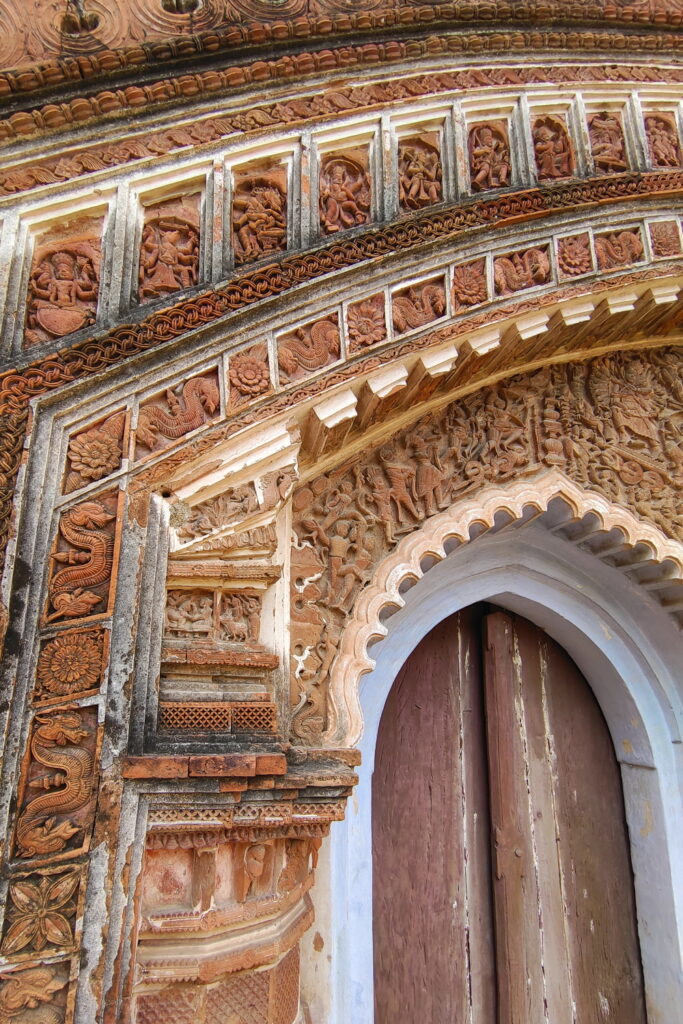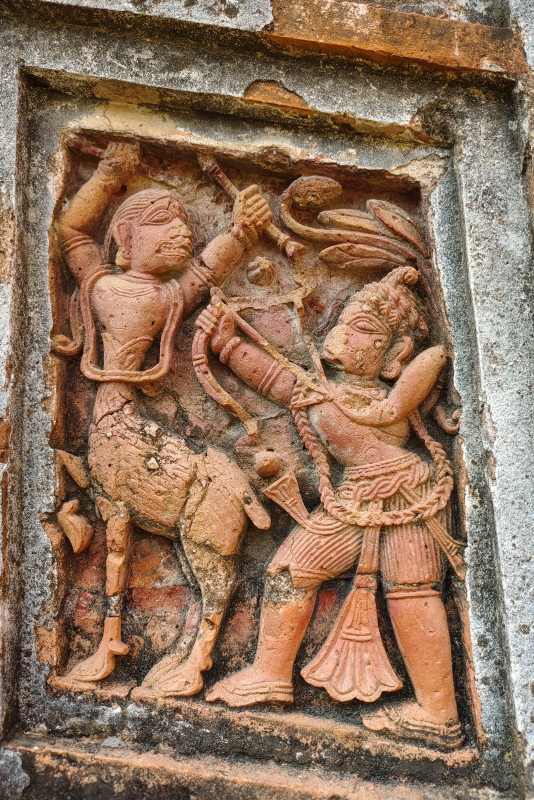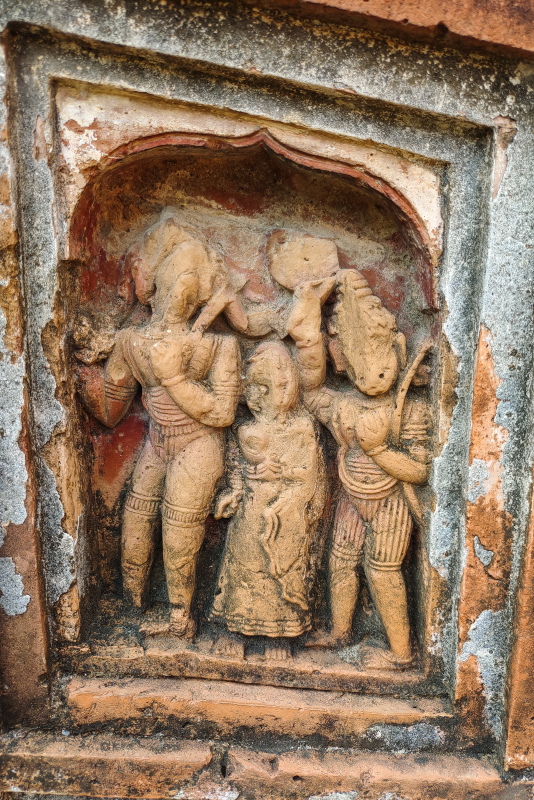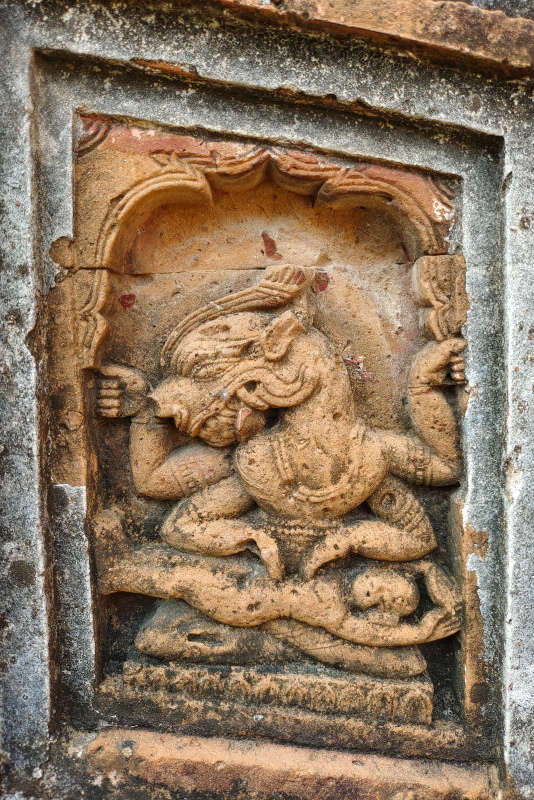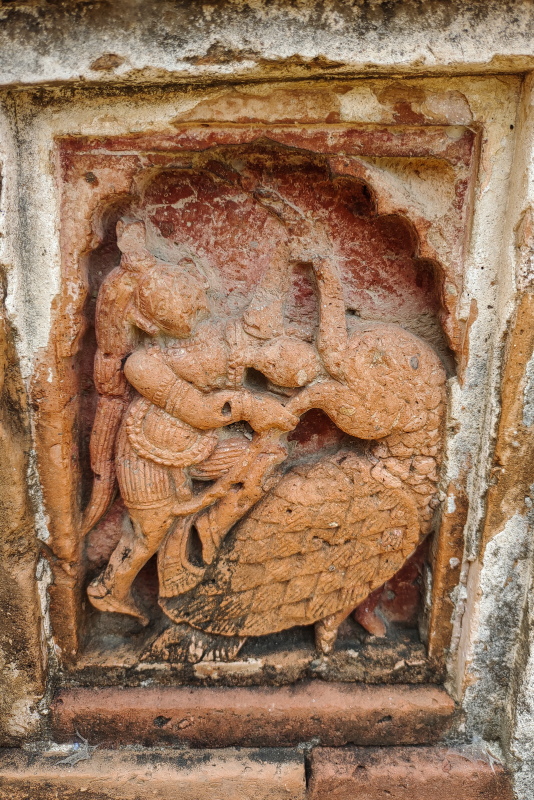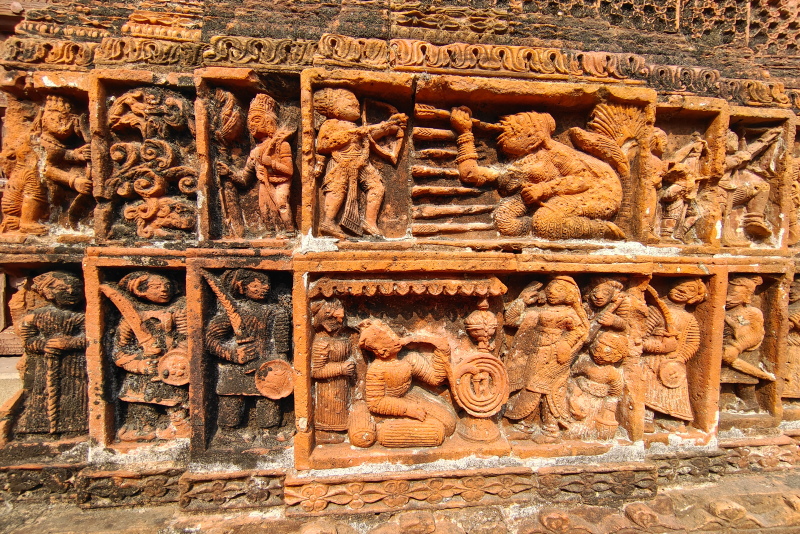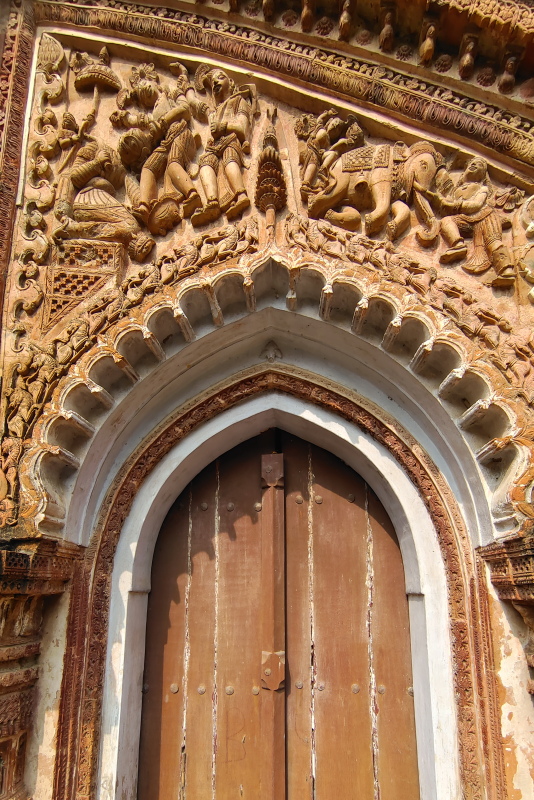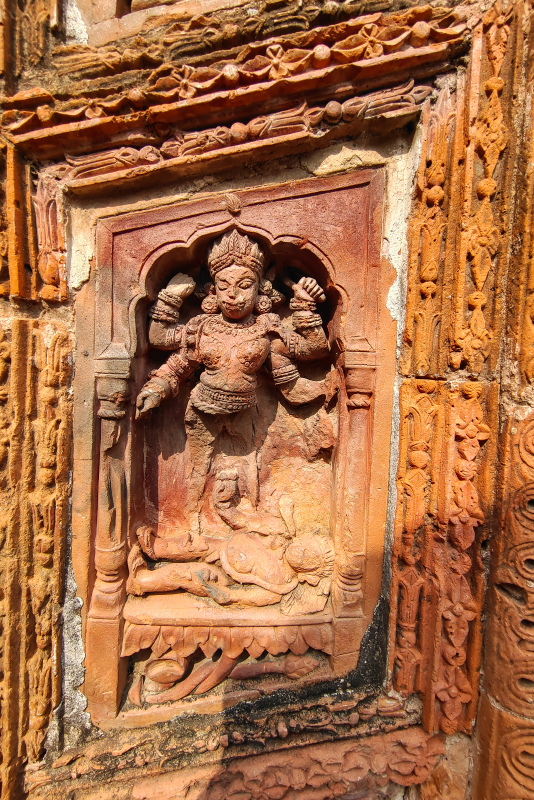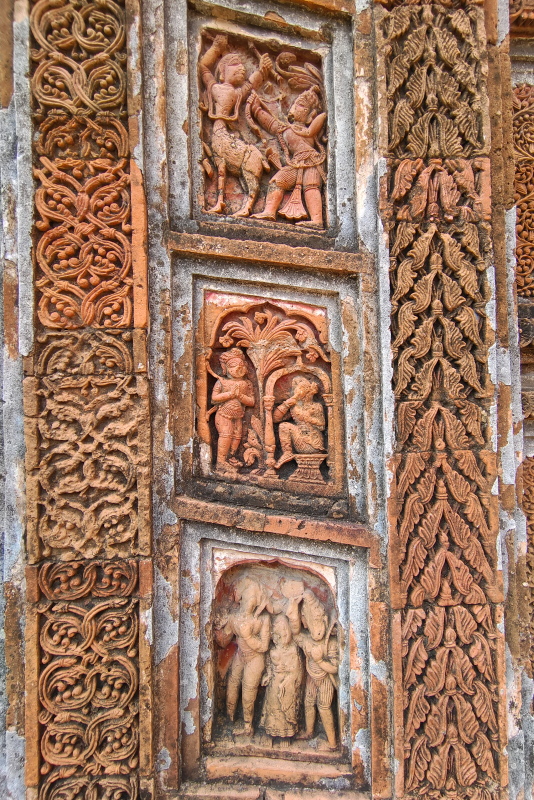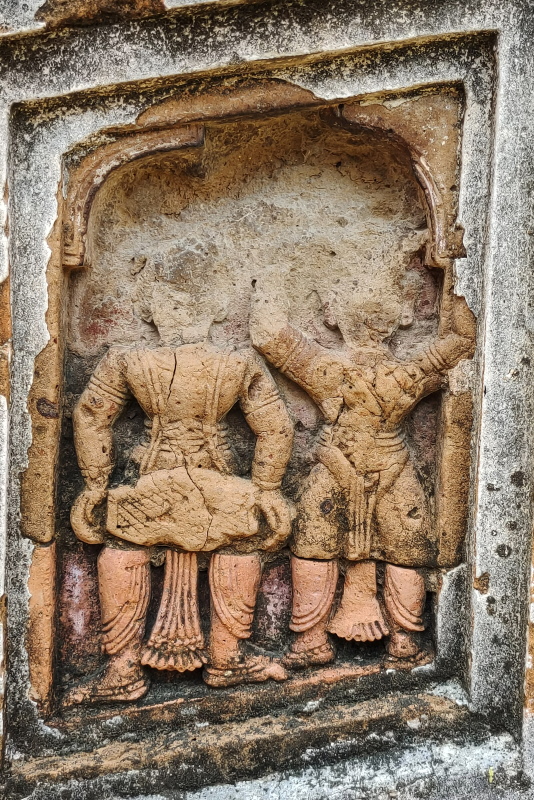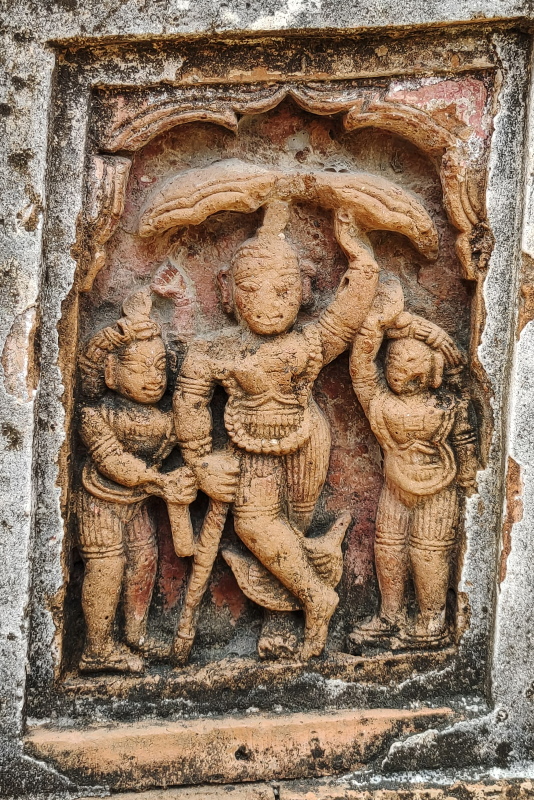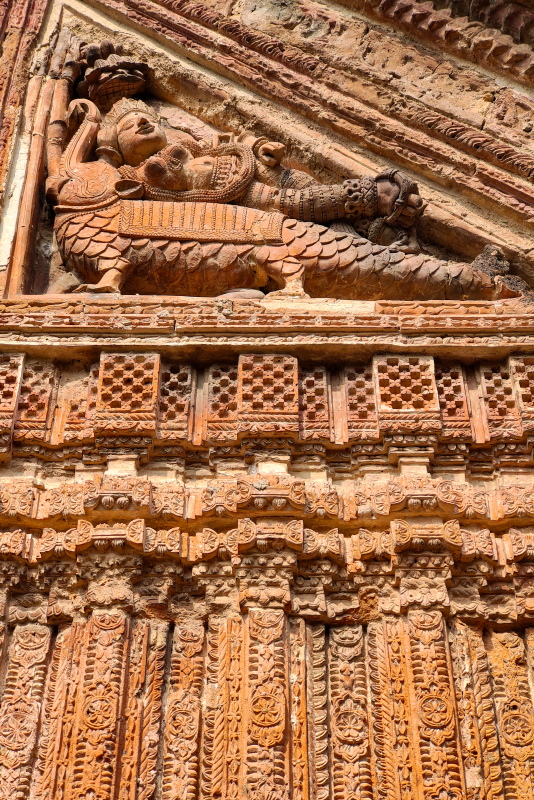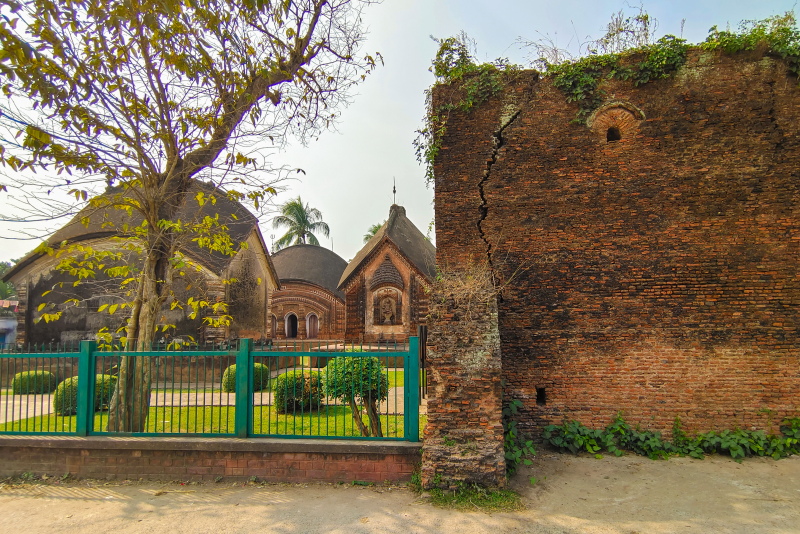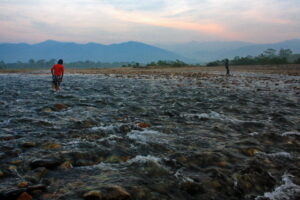“One upon a time, there were nearly 100 temples in Baranagar, like the holy town of Varanasi,” told Mr Bikash Sarkar, the caretaker of Charbangla Temple, who has been guarding these nearly three centuries-old temples for 30 years, “There were jungles all around when I started to look after these temples, and now tourists from abroad are coming here to witness these wonderful works of terracotta craftwork,” as he continued.
Mr Sarkar is now a salaried ad-hoc employee of ASI or Archaeological Survey of India who looks after the maintenance of Charbangla Temple and a few other nearby temples located on the Ganga river’s eastern side in Azimganj near Beharampore in Murshidabad in the state of West Bengal.
So, if you are visiting Beharampore or Cossimbazar for a trip, do not forget to visit Charbangla Temple and look for Mr Sarkar, who can help you to identify the mythological characters depicted on the walls of the temples. I can assure you the works are as delicate as the temples of Bishnupur, known as the Terracotta Town of Bengal.
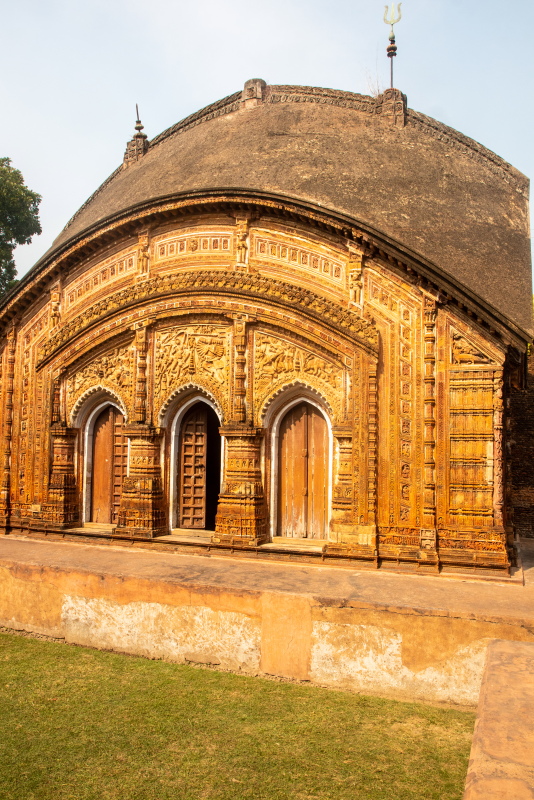
Table of Contents
History
Charbangala Temple and half a dozen others still located in Baronagar were initially built by Rani Bhabani of Natore in Rajshahi district (in present-day Bangladesh). Natore was one of the largest zamindari estates under the reign of Murshidkuli Khan, and the Nawabs of Bengal followed him. Rani Bhabani was the zamindar or in-charge of this estate after the death of his husband, Raja Ramakanta Ray. She was popularly called Ardhabangeswari (অর্ধবঙ্গেশ্বরী) for her influence on the culture and politics of Bengal at that time. She borrowed land in Baranagar near Cossimbazar from Nawab Alibardi Khan to construct an office to deposit the collected tax to Nawab’s office quickly. Gradually she made a zamindar palace here and many Hindu temples thereafter. She also built schools, roads and guesthouses on her estate. Charbangla Temples are also among those temples that were built near 1760 during the time of Rani Bhabani.
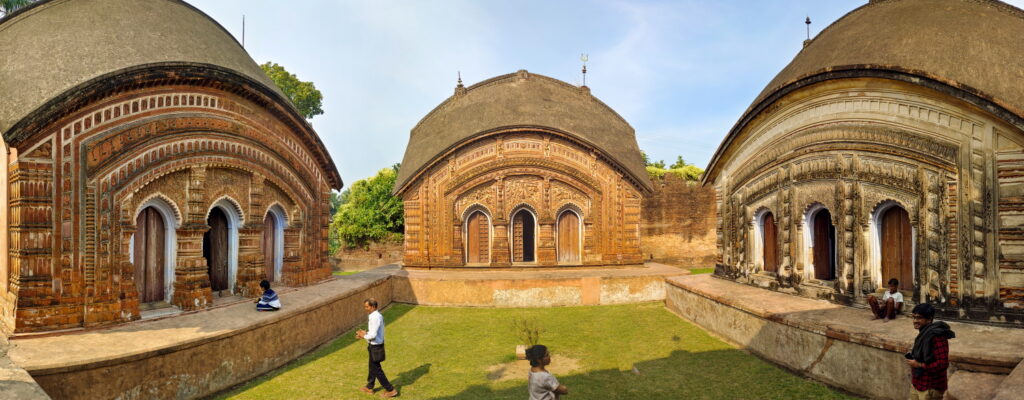
Architecture
Charbangla temple is technically not a Char-Bangla temple but rather an approximation of four Ek-Bangla temples, one beside the other. The temples are arranged in a square arena while opposite temples face each another. Each temple is like a hut with three doors and three Shivalingas inside. The facade of the two temples is made of terracotta and the most delicate craftworks you will ever encounter in Bengal. One temple has ponch (solution made from conch shell) work, while the front of the fourth temple is plain.
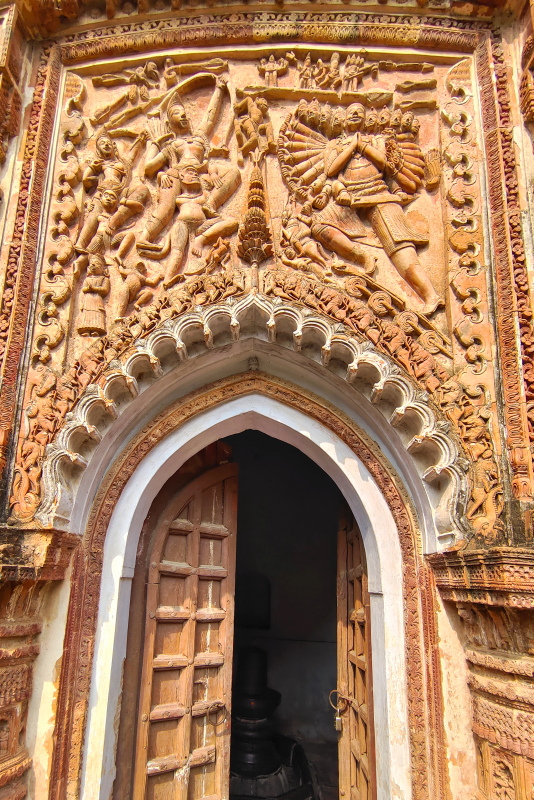
The works on the facade are figures and incidents influenced by mythological epics like Ramayana and Puranas. One can notice many stories of Ramayana depicted on the walls. There is also the depiction of Vishnu’s dasavatars and different forms of Devi Parvati. The best part is a good amount of artworks are still preserved in their original form, unlike the terracotta works on the temples of Bishnupur. The ruins of the old estate or kachari house are adjacent to this temple complex. The changed course of the Ganga river (Bhagirathi river, as known locally) is hardly 15 feet away from the Charbangla temple complex.
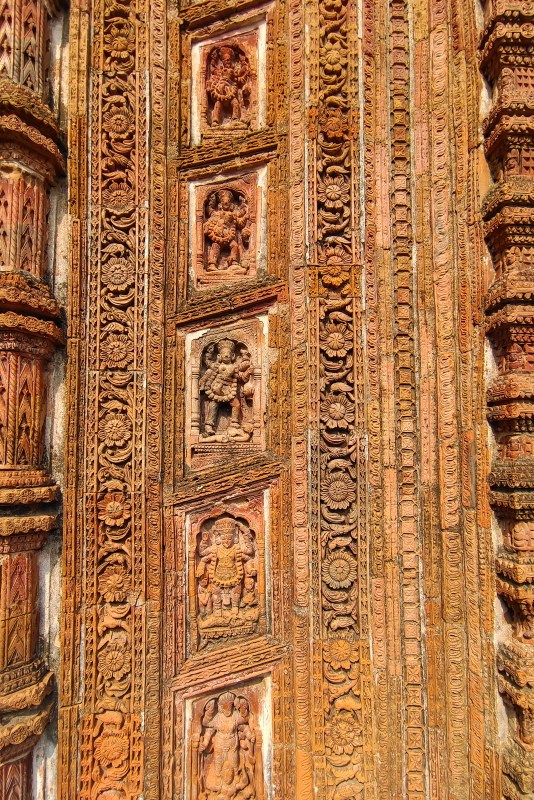
Nearby Temples
Bhabaniswar Temple
Bhabaniswar Temple is located near Charbagh Temple. It was built by Tarasundari, daughter of Rani Bhabani, in 1755. It is the tallest lime and mortar temple in this region that existed until now. The dome is like an inverted lotus with a circular corridor around the inner sanctum. The intricate works on the facade are mostly destroyed. This temple now comes under the purview of ASI, and restoration works have been going on recently.
Gangeswar Temple
This temple is popularly known as Jorebangla temple as the twin terracotta temples share an attached roof and a common wall. It was built in the eighteenth century by Rani Bhabani. The works on the temples’ walls are of daily lives and animal motifs, while that on the pillars are from Ramayana and Bhagavat Gita.
How to reach
Baranagar is on the eastern bank of the Bhagirathi River. The easiest way to go there from Beharampore is to reach Debipur Ghat in Jiaganj. From Debipur Ghat, you must catch a boat to cross the river and reach the opposite side. Then, you can walk to Charbangla Temple in a few minutes. Ask for directions from locals as you have to walk across the premises of local houses beside the river. The other easier way is to reach Sadar Ghat and catch a boat to the river’s other side. And then, you can hire a Toto (battery-operated auto) to Charbangla Temple and a few other places like Khusbagh and Kiriteswari Temple.
You can reach Beharampore from Kolkata by road or by train. Two roads connect Beharampore with Kolkata. One goes via Kandi, while the other is via Krishnanagar and Palashi. Both of them take almost equal time to reach. The distance is less via Krishnanagar, and the road condition is comparatively much better on that route. It takes nearly 5-6 hours to get to Beharampore from Kolkata.
Many trains from Howrah, Sealdah and Kolkata terminals will take you to Beharampore Court (BPC) or Azimganj (AZ) stations. Both of these stations are very close to Behrampore city. The 13113 Hazarduari Express is the best train to reach Beharampore from Kolkata. It takes nearly 4 hours to reach by train.
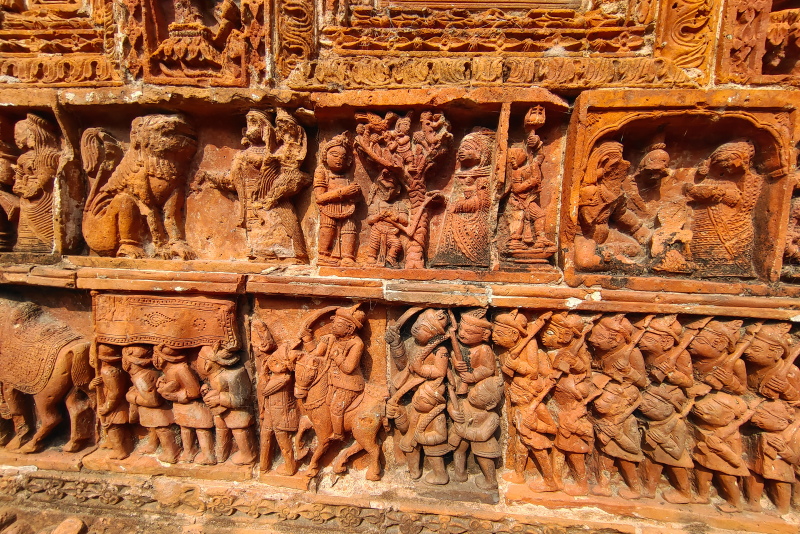
Where to stay
There are many hotels in Beharampore, Cossimbazar and Azimganj to stay at during your trip to Murshidabad. We stayed in the Cossimbazar Palace of Roys, also known as Cossimbazar Choto Rajbari. Jalchabi Resort, Sagnik Hotel and WBTDC Lodge are a few other reasonable accommodations to stay.
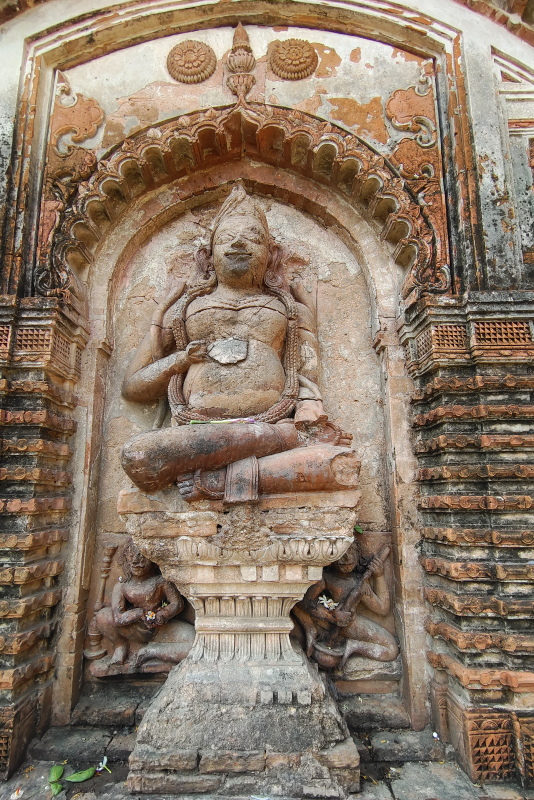
When to visit
You can visit Behrampore and Charbangla Temple throughout the year, but the best time is during winter when the weather is pleasant, and you can walk around for long hours under the sun. During summer, you must carry an umbrella and cap to protect yourself from direct sunlight.
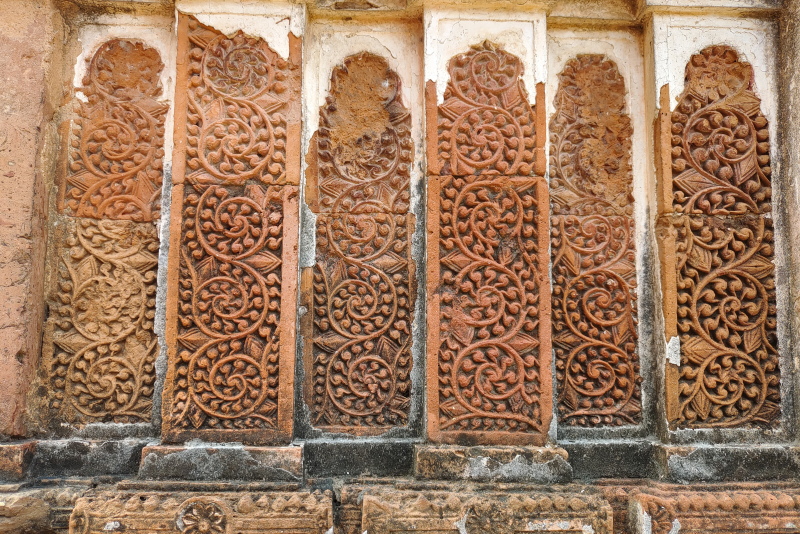
More photos of Charbangla Temple
